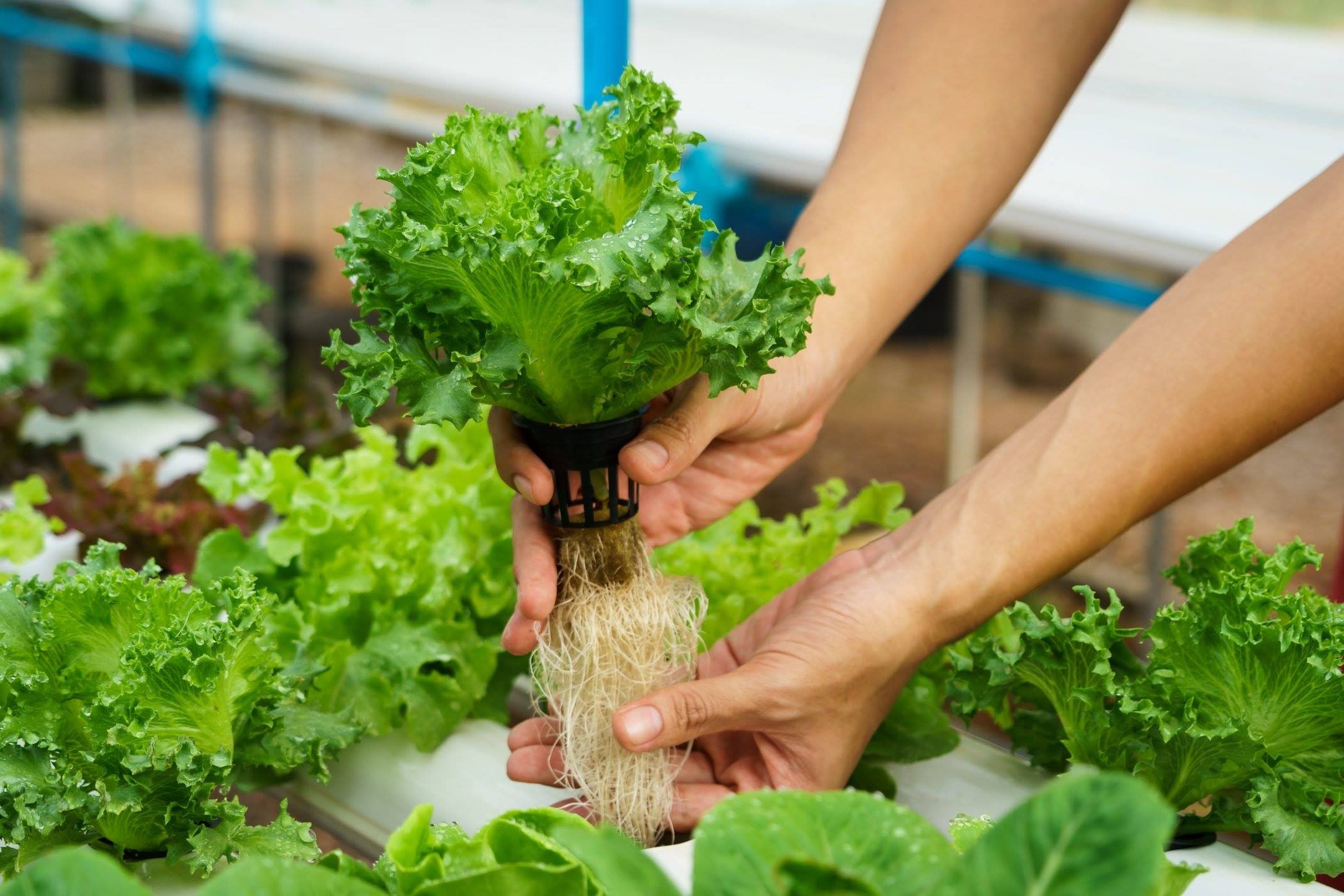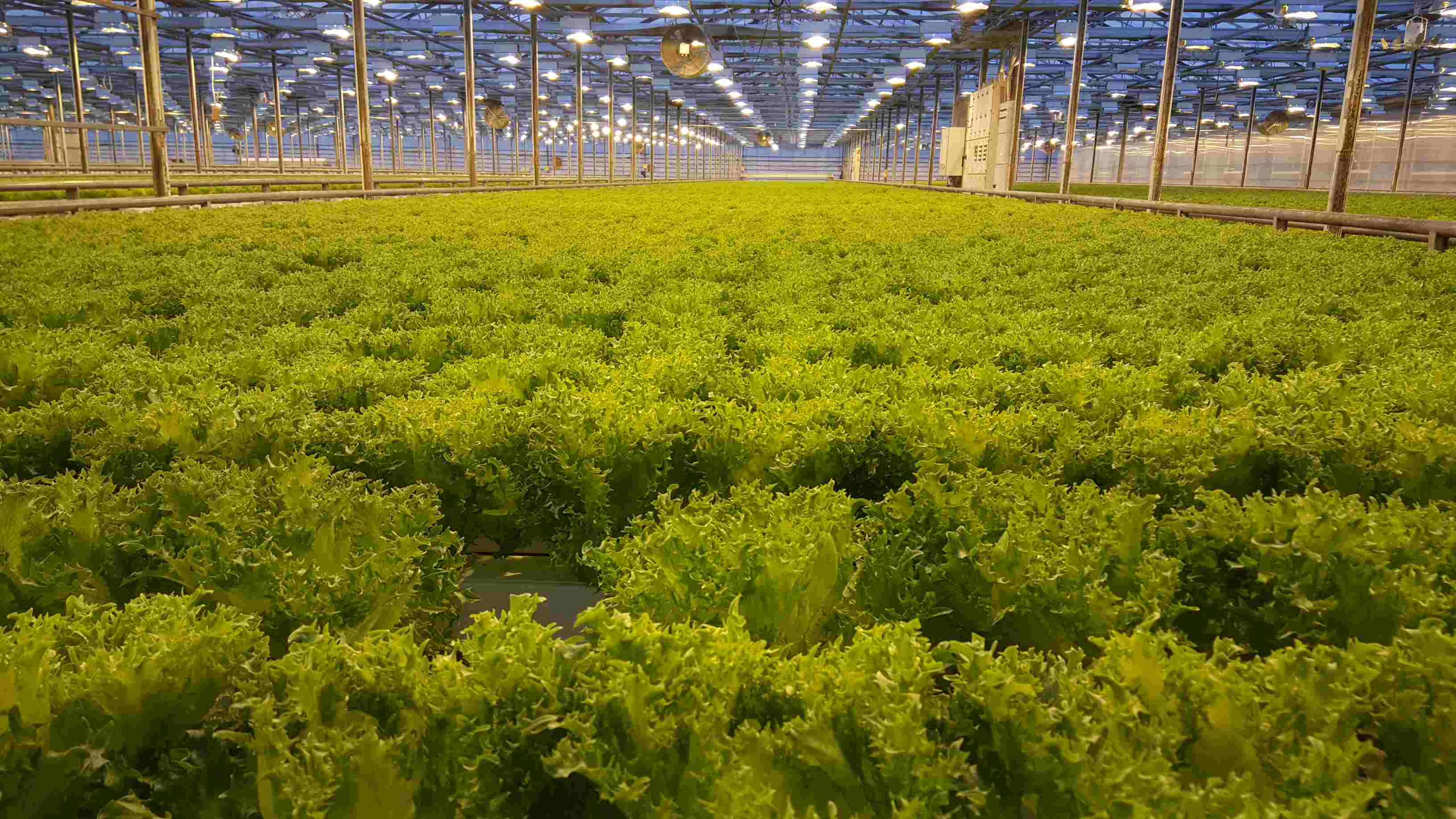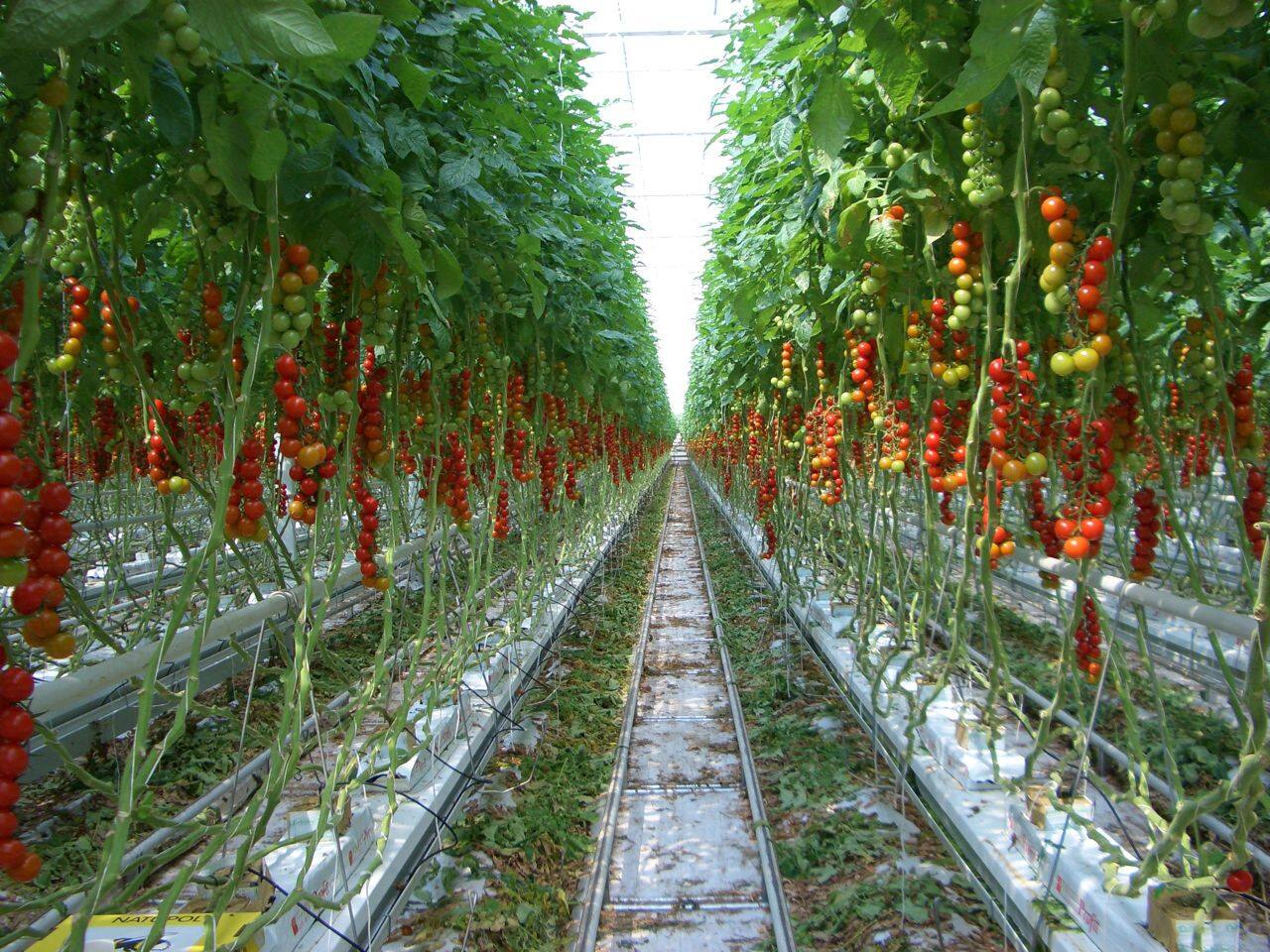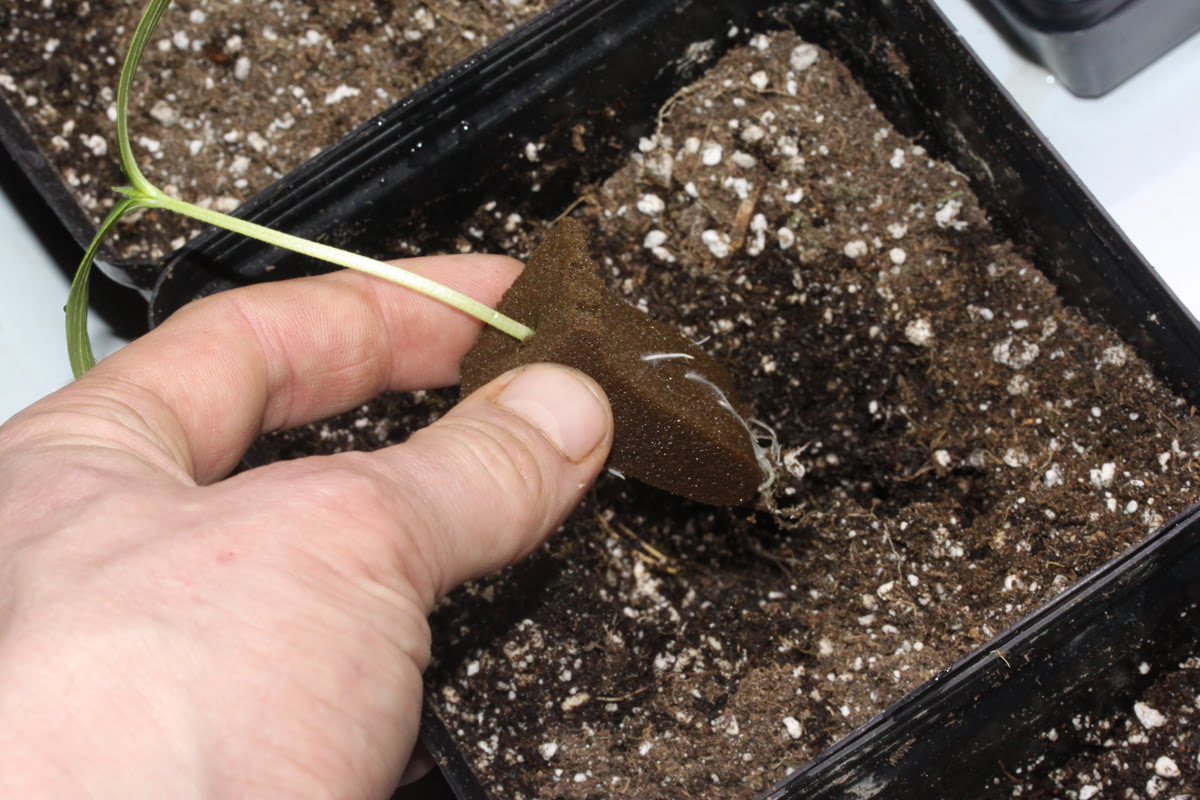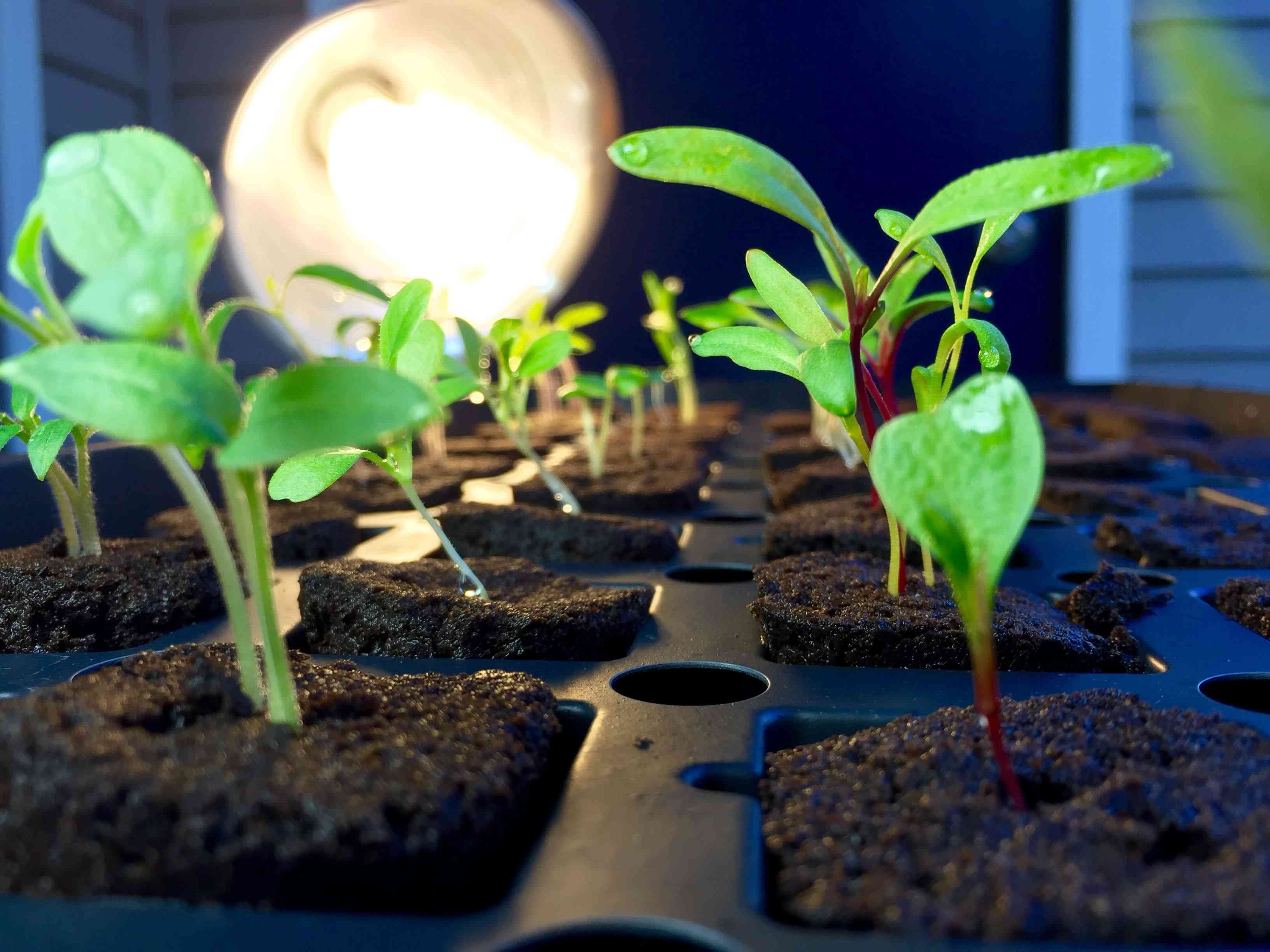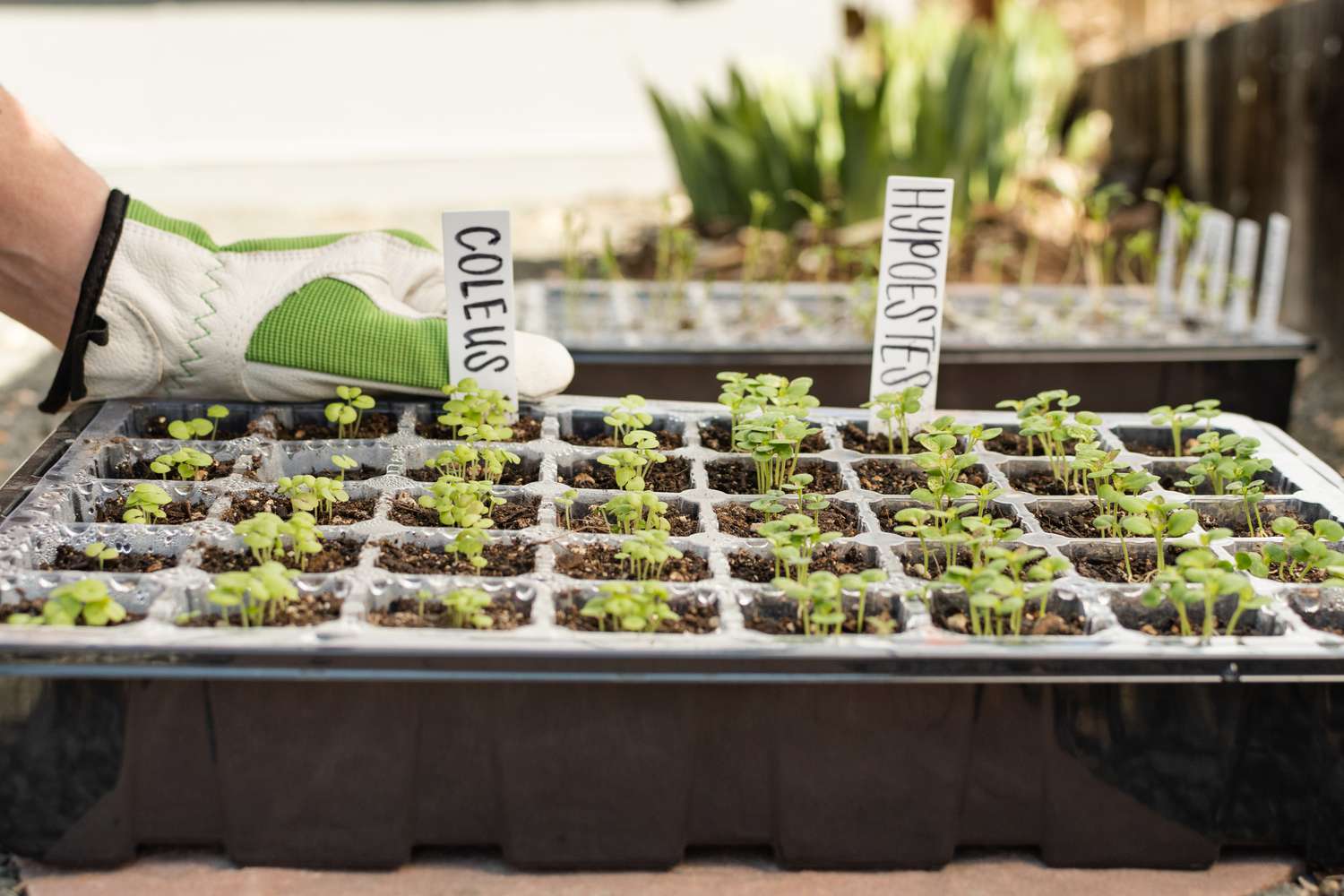Home>Gardening Tips and Tricks>Eco-Friendly Gardening>How To Grow Seedlings For Hydroponics
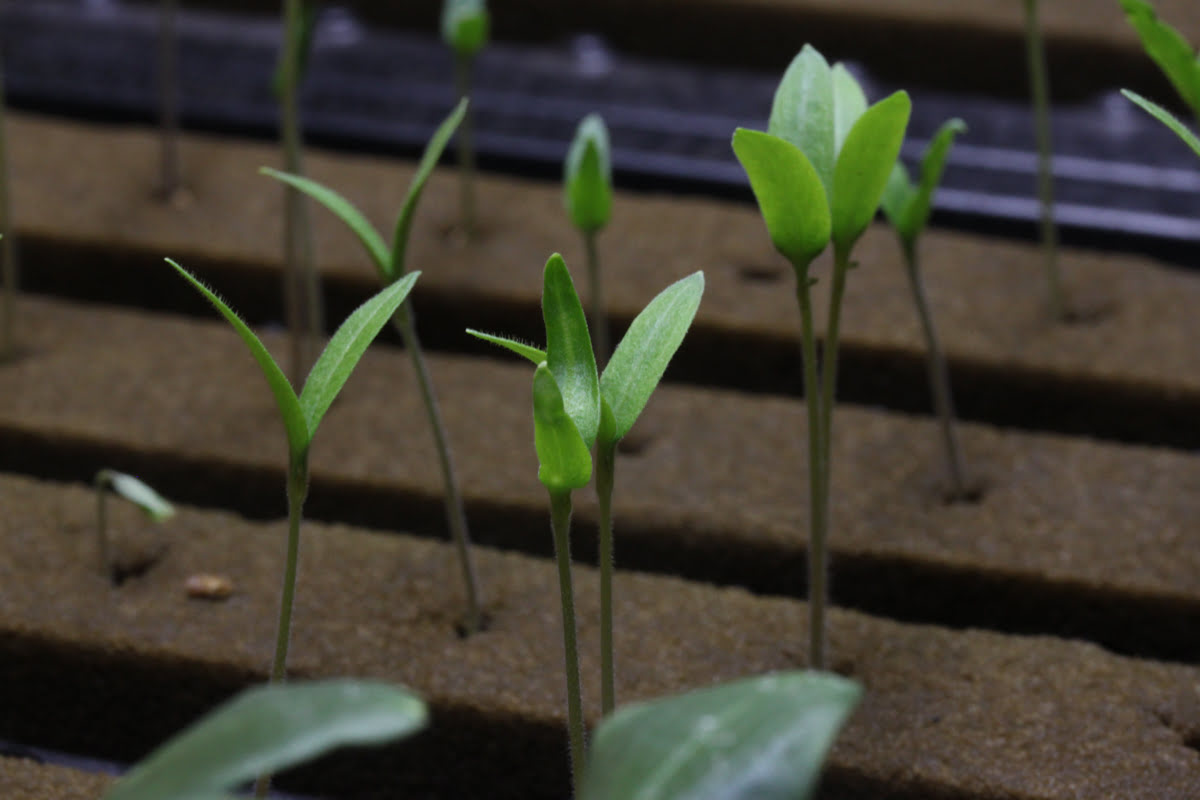

Eco-Friendly Gardening
How To Grow Seedlings For Hydroponics
Published: January 4, 2024
Learn how to grow seedlings for hydroponics using eco-friendly gardening methods. Start your sustainable gardening journey today!
(Many of the links in this article redirect to a specific reviewed product. Your purchase of these products through affiliate links helps to generate commission for Chicagolandgardening.com, at no extra cost. Learn more)
Table of Contents
- Introduction
- Choosing the Right Seeds
- Preparing the Growing Medium
- Germinating the Seeds
- Transplanting the Seedlings
- Providing Proper Lighting
- Maintaining Ideal Temperature and Humidity
- Nutrient Solution for Hydroponic Seedlings
- Monitoring and Adjusting pH Levels
- Preventing Disease and Pests
- Harvesting and Using Hydroponic Seedlings
- Conclusion
Introduction
Welcome to the world of eco-friendly gardening! Growing plants using hydroponics is a great way to minimize environmental impact and maximize your gardening success. Whether you have limited outdoor space, want to grow your own fresh produce year-round, or simply enjoy the challenge of using innovative gardening techniques, hydroponics is an excellent option for you.
Unlike traditional soil-based gardening, hydroponics utilizes nutrient-rich water as the growing medium, allowing plants to thrive without the need for soil. This method offers numerous benefits, including faster growth, higher yields, and the ability to cultivate plants in any climate or season.
Before you embark on your hydroponic gardening journey, it’s important to understand the fundamental steps and principles involved in growing seedlings for hydroponics. From choosing the right seeds to monitoring the pH levels, there are crucial elements to consider to ensure successful seedling growth and development.
In this comprehensive guide, we will walk you through the essential steps of growing seedlings for hydroponics. By following these steps and implementing eco-friendly practices, you will be well on your way to enjoying a bountiful harvest of vibrant, healthy plants.
Choosing the Right Seeds
When it comes to hydroponic gardening, selecting the right seeds is crucial for successful seedling growth. Here are some important factors to consider when choosing seeds for your hydroponic garden:
- Plant compatibility: Not all plants thrive in a hydroponic system. It’s essential to choose seeds that are well-suited for hydroponic cultivation. Vegetables like lettuce, spinach, tomatoes, peppers, and herbs like basil and parsley are commonly grown in hydroponic systems due to their adaptability and high yields.
- Non-GMO and organic: Opt for non-genetically modified organism (GMO) seeds to ensure the integrity and sustainability of your hydroponic garden. Additionally, consider using organic seeds to avoid the potential risks associated with pesticides or synthetic fertilizers.
- Seed quality: High-quality seeds will have a greater likelihood of germination and healthy growth. Look for seeds from reputable suppliers that offer information on germination rates, seed viability, and storage conditions.
- Growth characteristics: Take into account the growth characteristics of the plants you intend to grow. Consider factors such as size, growth rate, and the amount of space required. This will help you plan and optimize your hydroponic system accordingly.
- Variety selection: Explore different varieties within a specific plant species to diversify your garden and cater to your personal preferences. Choose varieties that are known for their flavor, productivity, disease resistance, or unique characteristics.
Remember to check the seed packet or supplier’s website for specific recommendations or requirements related to growing the chosen seeds hydroponically. Some seeds may require special treatments, such as soaking or cold stratification, to enhance germination rates and ensure successful growth in a hydroponic system.
By carefully selecting the right seeds for your hydroponic garden, you are setting the foundation for healthy and productive seedlings that will thrive in your system.
Preparing the Growing Medium
The growing medium is a crucial element in hydroponic gardening, as it provides support for the plants and serves as a base for nutrient absorption. Unlike traditional soil-based gardening, hydroponic systems utilize inert materials that allow for optimal root growth and nutrient uptake. Here are the steps to prepare the growing medium:
- Choose the appropriate growing medium: There are various types of growing mediums available for hydroponic gardening, including rockwool, perlite, vermiculite, coconut coir, and expanded clay pellets. Each medium has its own characteristics, such as water retention, aeration, and pH stability. Consider your specific needs, the type of plants being grown, and the desired growth environment to select the most suitable growing medium.
- Prepare the growing containers: Depending on the size and type of your hydroponic system, you may use individual containers or trays with compartments. Ensure that the containers are clean and free from any residues or contaminants that may affect plant health.
- Soak or rinse the growing medium: Some growing mediums, such as rockwool or coco coir, may require pre-soaking or rinsing to remove any excess salts or unwanted particles. Follow the manufacturer’s instructions, if applicable, to properly prepare the medium for use.
- Fill the containers: Gently fill each container with the chosen growing medium, being careful not to pack it too tightly. Ensure that there is adequate space for the roots to spread and grow without becoming overcrowded.
- Create slits or holes for seedling placement: Depending on the type of growing medium, you may need to create small slits or holes to accommodate the transplanting of seedlings. These openings should be large enough to secure the roots without causing damage.
Preparing the growing medium sets the stage for successful seedling growth and development. It provides the plants with a stable environment and enables the proper absorption of essential nutrients.
Germinating the Seeds
Germination is the process by which a seed begins to grow and develop into a new plant. Proper germination is crucial to ensure healthy seedlings in your hydroponic garden. Here are the steps to germinate your seeds:
- Select the appropriate germination method: There are various methods to germinate seeds, including using paper towels, starter plugs, or seedling trays. Choose a method that suits your preference and the type of seeds you are germinating.
- Moisten the germination medium: If using paper towels or starter plugs, moisten them with water to create a humid environment for the seeds. Avoid soaking the medium, as excess moisture can lead to rot or fungal growth.
- Place the seeds: Carefully place the seeds on the moistened medium, ensuring they are spaced apart to prevent overcrowding. Follow the recommended seed depth and spacing guidelines provided by the seed supplier.
- Provide optimal conditions: Seeds require specific conditions to germinate successfully. Maintain a warm and consistent temperature, usually between 70 to 85 degrees Fahrenheit (21 to 29 degrees Celsius). Place the germination setup in a well-lit area or use artificial grow lights to provide the necessary light for germination.
- Monitor moisture levels: Regularly check the moisture levels in the germination medium. It should remain damp but not overly saturated. Mist the medium with water if it starts to dry out.
- Be patient: Germination times vary depending on the type of seeds. Some seeds may germinate within days, while others may take a couple of weeks. Be patient and avoid disturbing the seeds during this critical stage.
Germinating seeds is an exciting and crucial step in the hydroponic gardening process. It sets the foundation for healthy seedlings that will eventually flourish in your hydroponic system. Remember to keep an eye on the moisture levels, temperature, and light conditions to ensure successful germination.
Transplanting the Seedlings
Once your seeds have germinated and developed into healthy seedlings, it’s time to transplant them into your hydroponic system. This process involves carefully moving the seedlings from their germination medium to the growing containers where they will continue to thrive. Follow these steps for successful seedling transplantation:
- Prepare the growing containers: Ensure that the growing containers are clean and free from any debris or residues. Fill the containers with the chosen growing medium, leaving enough space for the transplanted seedlings.
- Handle the seedlings with care: Gently remove the seedlings from the germination medium, taking care not to damage the delicate roots. Hold the seedlings by their leaves or using a spoon to gently lift them out.
- Create holes for planting: Make small holes in the growing medium of the containers, spaced apart to provide adequate room for the seedlings. The holes should be deep enough to cover the roots and secure the seedlings in place.
- Plant the seedlings: Carefully place each seedling into the prepared holes, ensuring that the roots are covered with the growing medium. Press the medium gently around the seedling to provide stability and proper contact with the roots.
- Water the seedlings: After transplanting, water the seedlings to help them establish in their new environment. Use a gentle stream of water or a nutrient solution to thoroughly moisten the growing medium around the seedlings.
- Provide proper lighting and environmental conditions: Place the transplanted seedlings in a well-lit area or under appropriate grow lights. Maintain the optimal temperature, humidity levels, and airflow to promote healthy growth and development.
- Monitor the seedlings: Keep a close eye on the transplanted seedlings for signs of stress or nutrient deficiencies. Adjust the lighting, nutrient solution, and environmental conditions as needed to ensure their well-being.
Transplanting seedlings is a critical stage in hydroponic gardening, as it sets the stage for their continued growth and success in the system. By following these steps and providing proper care, your seedlings will thrive and flourish as they adapt to their new hydroponic environment.
Providing Proper Lighting
Light is a crucial element for the growth and development of plants in a hydroponic system. Since hydroponic gardens are typically grown indoors or in controlled environments, it is essential to provide the proper lighting conditions to ensure the success of your seedlings. Here are some key considerations for providing proper lighting:
- Choose the right type of light: Different stages of plant growth require different types of light. For seedlings, full spectrum fluorescent lights or LED grow lights are recommended. These lights emit the right amount and quality of light for optimal photosynthesis and healthy seedling development.
- Position the lights correctly: Position the lights at the appropriate distance above the seedlings to avoid burning or stretching. The distance will vary depending on the type of light used, so refer to the manufacturer’s guidelines for specific recommendations.
- Provide adequate light intensity and duration: Seedlings require approximately 14-16 hours of light per day for healthy growth. Ensure that the light intensity is sufficient for the plants to receive the necessary energy for photosynthesis. Adjust the lighting duration and intensity as the seedlings grow and enter different stages of development.
- Monitor and adjust for light distribution: To ensure even light distribution, periodically rotate the trays or adjust the position of the lights. This will prevent uneven growth and ensure that all seedlings receive an equal amount of light.
- Supplement natural light if necessary: If your hydroponic garden is located in a space with limited natural light, consider using supplemental lighting. This can help provide the necessary light spectrum and intensity for optimal seedling growth.
- Regularly inspect and clean the lights: Dust, dirt, or debris can block the light output, reducing its effectiveness. Regularly inspect and clean the lights to maximize their efficiency and ensure the seedlings receive the full benefit of the light.
Providing proper lighting is vital for healthy, robust seedling growth in a hydroponic system. By selecting the right type of light, positioning it correctly, and maintaining the appropriate duration and intensity, you can provide the ideal lighting conditions for your seedlings’ photosynthesis and overall development.
Maintaining Ideal Temperature and Humidity
Maintaining the ideal temperature and humidity levels is crucial for the successful growth and development of seedlings in a hydroponic system. By ensuring the right environmental conditions, you can create an optimal growing environment for your plants. Here are some key factors to consider:
- Temperature: Most seedlings thrive in temperatures ranging from 65 to 75 degrees Fahrenheit (18 to 24 degrees Celsius). Maintain a consistent temperature within this range to promote healthy growth. Use a thermometer to monitor the temperature and make necessary adjustments if it falls outside the optimal range.
- Avoid extreme temperature fluctuations: Sudden temperature changes can stress seedlings and hinder their growth. Ensure there are no drastic temperature fluctuations in the growing area by providing insulation, using heating or cooling devices, and avoiding exposure to cold drafts or direct heat sources.
- Humidity: Seedlings require higher humidity levels during their early growth stages. Aim for a humidity range of 50 to 70%. Use a hygrometer to monitor humidity levels and employ methods such as misting, placing trays of water near the seedlings, or using a humidifier to maintain adequate humidity.
- Ventilation: Proper airflow is essential to prevent stagnant air and minimize the risk of diseases or pests. Install fans or ensure adequate ventilation to promote air circulation while avoiding excessive drafts that can lead to moisture loss or temperature fluctuations.
- Monitor and adjust for environmental conditions: Regularly monitor the temperature and humidity levels in your hydroponic system. Make necessary adjustments by tweaking the ventilation, heating, or cooling systems to maintain the ideal conditions for seedling growth.
- Consider plant-specific needs: Different plant species may have specific temperature and humidity requirements. Research the optimal conditions for the types of seedlings you are growing and tailor the environment accordingly.
Maintaining the ideal temperature and humidity levels in your hydroponic system is crucial for the health and vitality of your seedlings. By monitoring and adjusting the environmental conditions, you create an optimal growing environment that supports healthy growth and minimizes the risk of stress or diseases.
Nutrient Solution for Hydroponic Seedlings
In a hydroponic system, plants rely on a nutrient solution instead of soil to obtain the necessary nutrients for growth. Providing the appropriate nutrient solution is vital for the healthy development of seedlings. Here’s what you need to know:
- Choose a balanced nutrient solution: Look for a hydroponic nutrient solution that is specifically formulated for seedlings. These solutions typically contain a balanced blend of essential macro and micronutrients required for initial growth stages.
- Follow the manufacturer’s instructions: Carefully read and follow the instructions provided by the nutrient solution manufacturer. They will specify the correct dilution rates and usage guidelines based on the type and stage of the plants you are growing.
- Mix the nutrient solution correctly: Measure the appropriate amount of nutrient solution and dissolve it in the correct ratio with water. Use distilled or filtered water to avoid any potential contaminants that could negatively impact plant health.
- Monitor and adjust nutrient levels: Regularly test the nutrient solution for its pH level and electrical conductivity (EC). pH levels should be kept within the recommended range, typically between 5.5 and 6.5 for most hydroponic crops. Adjust the pH levels if necessary using pH up or pH down solutions.
- Start with a lower nutrient concentration: Seedlings are more sensitive to higher nutrient concentrations, so it is advisable to start with a lower concentration and gradually increase it as the seedlings mature and their nutrient demands grow.
- Observe signs of nutrient deficiencies or excess: Watch for any signs of nutrient deficiencies or excess, such as yellowing leaves, stunted growth, or leaf discoloration. Adjust the nutrient solution accordingly to address any issues and provide the necessary nutrients.
- Flush the system periodically: To prevent nutrient build-up or salt accumulation in the system, periodically flush the hydroponic system with fresh water. Flushing helps to remove any excess salts and maintains a healthy nutrient balance for the seedlings.
Providing the appropriate nutrient solution is vital for the successful growth of seedlings in a hydroponic system. By following the manufacturer’s instructions, monitoring nutrient levels, and adjusting as needed, you can ensure that your seedlings receive optimal nutrition for healthy and vigorous growth.
Monitoring and Adjusting pH Levels
Maintaining the proper pH levels in a hydroponic system is essential for optimal nutrient uptake and overall plant health. pH stands for “potential of hydrogen” and measures the acidity or alkalinity of the nutrient solution. Here are some key points to consider when monitoring and adjusting pH levels:
- Understand the pH requirements: Different plants have specific pH preferences for nutrient absorption. Research the recommended pH range for the specific plants you are growing in your hydroponic system.
- Monitor pH levels regularly: Use a pH meter or pH testing kit to monitor the pH levels of the nutrient solution. pH should typically be maintained between 5.5 and 6.5 for most hydroponic crops.
- Adjust pH levels carefully: If the pH levels are too high (alkaline), you can lower it by adding small amounts of pH down solution. If the pH levels are too low (acidic), you can raise it by adding small amounts of pH up solution. Make adjustments gradually and retest the pH levels until the desired range is achieved.
- Consider the impact of nutrient uptake: pH levels influence nutrient availability for plants. Higher pH can lead to nutrient deficiencies, as certain elements become less available for absorption. Lower pH can result in nutrient toxicity, as some elements become more readily available but can be absorbed in excess. Understanding the nutrient uptake dynamics at different pH levels is crucial for plant health.
- Watch for signs of pH imbalance: pH imbalances can manifest in visible signs such as nutrient deficiencies, stunted growth, or discolored foliage. Regularly inspect your plants for any symptoms, as it may indicate the need for pH adjustments.
- Keep records: Maintain a log of pH readings and adjustments to track the changes and patterns over time. This record can help you identify any recurring issues and establish a more efficient pH management routine.
- Consider automated pH control: For larger hydroponic systems or those with fluctuating pH levels, investing in an automated pH control system may be beneficial. These systems can monitor pH levels and make necessary adjustments automatically for precise pH management.
Monitoring and adjusting pH levels are essential for maintaining a healthy and productive hydroponic system. By regularly testing, carefully adjusting, and keeping records, you can ensure that your plants receive the optimal pH environment for nutrient uptake and overall growth.
Preventing Disease and Pests
Just like with any garden, hydroponic systems are susceptible to diseases and pest infestations. However, by implementing preventive measures, you can greatly reduce the risk of these issues and ensure the health and vitality of your plants. Here are some effective strategies for preventing disease and pests in your hydroponic garden:
- Maintain cleanliness: A clean and hygienic environment is crucial for disease prevention. Keep your hydroponic system, containers, tools, and growing area clean and free from debris or organic matter that could harbor pests or pathogens.
- Practice good hygiene: Wash your hands thoroughly before handling plants or working in the hydroponic system. Additionally, sterilize any tools or equipment that come into contact with the plants to prevent the spread of diseases.
- Monitor for early signs of problems: Regularly inspect your plants for any signs of disease, such as spots, discoloration, wilting, or abnormal growth. Detecting issues early allows for prompt action and minimizes the spread of diseases or pests.
- Use disease-resistant varieties: Selecting plant varieties that are known for their disease resistance can help reduce the risk of infections. Look for seeds or seedlings that are labeled as disease-resistant to increase your chances of success.
- Quarantine new plants: If introducing new plants to your hydroponic system, quarantine them for a period to ensure they are disease and pest-free. Monitor the new plants closely to detect any issues before introducing them to the rest of the garden.
- Implement integrated pest management (IPM): Adopt an IPM approach that combines cultural, physical, biological, and chemical control methods to manage pests effectively. This approach minimizes the use of harmful pesticides and focuses on sustainable, environmentally friendly pest control strategies.
- Enhance plant vigor: Healthy plants are better able to resist diseases and pests. Provide the proper nutrients, light, and environmental conditions to promote strong plant growth and overall vigor.
- Ensure proper air circulation: Good air circulation helps to prevent the buildup of humidity and reduces the risk of fungal diseases. Use fans or ventilation systems to improve airflow throughout the hydroponic system.
By implementing these preventive measures, you can create a healthier and more resilient hydroponic garden. Regular monitoring, timely actions, and a proactive approach to disease and pest control will greatly enhance the success of your gardening endeavors.
Harvesting and Using Hydroponic Seedlings
Harvesting your hydroponic seedlings is an exciting and rewarding process, as it signifies the culmination of your hard work and the opportunity to enjoy fresh, nutritious produce. Here are some steps to ensure a successful harvest and best utilize your hydroponic seedlings:
- Monitor plant maturity: Keep track of the growth stages of your plants and determine the optimal time for harvesting based on the specific crop’s maturity indicators. These can include color changes, size, or other plant-specific characteristics.
- Harvest with care: Gently cut or remove the mature seedlings from the hydroponic system, taking care not to damage neighboring plants or the overall root structure. Use clean, sharp tools to ensure a clean and precise harvest.
- Handle and store seedlings properly: After harvesting, handle the seedlings with care to avoid bruising or damage. Rinse them gently to remove any loose debris or residues. If you don’t plan to use them immediately, store the seedlings in a cool and humid environment to maintain their freshness and vitality.
- Utilize the harvested seedlings: Hydroponic seedlings can be used in various ways, depending on your culinary preferences and gardening goals. Enjoy them fresh in salads, sandwiches, or as garnishes. They can also be used in cooking, juicing, or in nutrient-rich smoothies.
- Consider preserving techniques: If you have a surplus of hydroponic seedlings, consider preserving them to extend their shelf life. Methods such as freezing, dehydrating, or pickling can allow you to enjoy these nutritious greens beyond their harvest window.
- Sustain continuous harvests: To maximize your hydroponic garden’s productivity, practice staggered or successive planting. This ensures a continuous supply of healthy seedlings ready for harvest, allowing you to enjoy fresh produce throughout the growing season.
- Note and improve: Take notes of your harvesting experiences, including the growth, taste, and overall performance of the seedlings. Use this information to make adjustments and improvements in your future hydroponic gardening endeavors.
Harvesting your hydroponic seedlings is a gratifying experience. By handling them carefully, storing them properly, and utilizing them in various ways, you can fully enjoy the fruits of your hydroponic gardening efforts. Remember, each harvest is an opportunity to learn and refine your techniques for even greater success in future cultivations.
Conclusion
Congratulations on completing this comprehensive guide to growing seedlings for hydroponics! By following the steps outlined in this article, you have learned the essential techniques and practices needed to cultivate robust and healthy seedlings in a hydroponic system.
From choosing the right seeds and preparing the growing medium to germinating the seeds and transplanting the seedlings, each step is crucial to ensure successful growth and development. By providing proper lighting, maintaining ideal temperature and humidity levels, and monitoring and adjusting pH levels, you create an optimal environment for your seedlings to thrive.
Additionally, understanding the significance of nutrient solutions and disease and pest prevention allows you to provide the necessary nutrition and protect your plants from potential threats. Finally, harvesting and utilizing your hydroponic seedlings not only provides you with fresh and nutritious produce but also allows you to fully appreciate the fruits of your labor.
Remember, hydroponic gardening is an ongoing learning process. As you continue your journey, take note of your experiences and make adjustments as needed. With dedication, patience, and a passion for eco-friendly gardening, you can achieve remarkable success in your hydroponic endeavors.
Happy growing!
